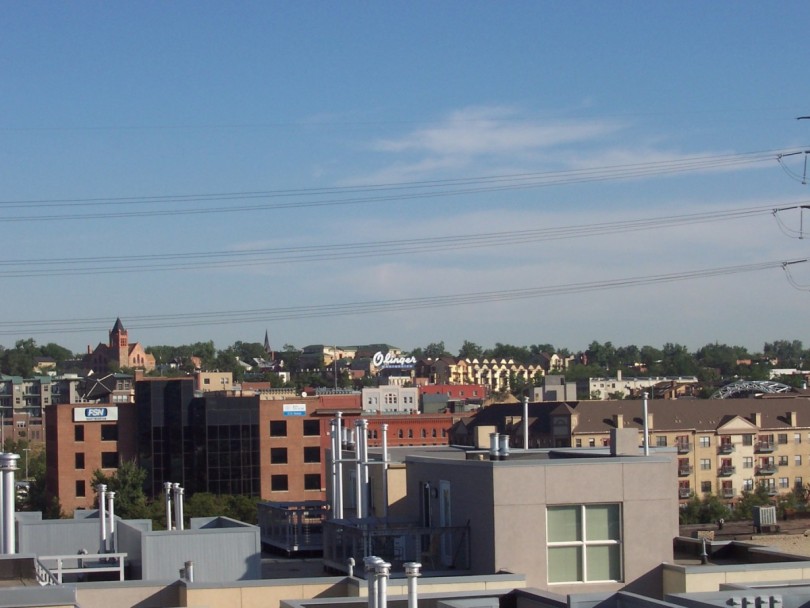
It should come as no surprise to retail brokers or developers that investors and prospective tenants have the Highland/Lower Highland neighborhood on their short list to buy or lease in. This trend has not always been the case. Over 150 years ago, the mostly Protestant, church-scattered neighborhood was initially developed, but it wasn’t until the turn of 19th century when many immigrants, mostly Italian, German and Scottish, discovered the neighborhood as a nearby escape from downtown Denver, and the population truly grew. The transformation of this area to the predominantly Hispanic and Italian neighborhood, as it is known to most longtime Denver residents, began in the 1920s and the population demographic remained largely consistent for 60-plus years.

In the 1990s, new bridges constructed over Interstate 25 improved connectivity between Denver and the Highland neighborhood, Elitch Gardens relocated to Platte Valley and the historic site on 38th Avenue and Tennyson Street was redeveloped. These changes provided the first signs of eminent rebirth for a now appealing neighborhood. After the 1990s rebirth, most commercial and residential developers were focused on the Highland’s Square area, roughly 32nd Avenue and Lowell Boulevard. Development in this area spread like wildfire as prices for all property types skyrocketed and inventory declined. As a result, many developers, tenants and buyers were forced to look for nearby alternative locations, such as LoHi, Sunnyside, Sloan’s Lake, Berkeley and Jefferson Park.
Many Denver residents were attracted to the quaintness and character of those neighborhoods, yet 38th Avenue was seen as a major traffic corridor of less desirable uses and unattractive buildings, such as automotive repair, pawn shops and brown-bag liquor stores. However, over the past few years, many industry professionals and commercial real estate users set their sights on the still somewhat seedy 38th Avenue corridor.
While currently in its infancy of redevelopment and gentrification, this is quickly changing and numerous opportunities are opening up for property owners, developers and business owners. Similar to the Highland’s Square neighborhood, changes to 38th Avenue started with a concentration between Federal and Sheridan boulevards. The former Elitch Gardens site, now a 24 Hour Fitness-anchored, mixed-use development, brought in some of the first national retail center type tenants and was an indication of what was to come. However, just like the surrounding neighborhoods, activity spread past the east and west boundaries, and as a result, we are seeing the rebirth of the 38th Avenue corridor, as it stretches from I-25 to Wadsworth Boulevard in Wheat Ridge. Because of the history of this corridor, it is no surprise that there are properties of all ages, types and sizes, and, as a result, urban renewal is taking on a similarly eclectic appearance.

The perpetual evolution of this corridor carries an underlying trend that cannot be ignored – the demographic shift is reflected in businesses catering to the needs of these new residents. Many restaurateurs are now considering the 38th Avenue corridor for new or additional locations and concepts, and while the types of restaurants vary greatly in price point and category, they appear to be competing for and appealing to the “trendy spot”– craving residents. Two examples are Denver Deep Dish, opening its second location at 38th Avenue and Kalamath Street, and Sunnyside Burger Bar, opening at 38th Avenue and Lipan Street. Both restaurateurs elected to remodel smaller properties that required significant construction to get them to the attractive caliber they are at today.
This trend can be seen in other nearby properties as well, like 2705 and 2709 W. 38th Ave., which are planning an overall update, according to Dennis McLin, principal of McLin Commercial. As a result, the tenants are considering a similar update to their existing business practices and products in order to entice local residents and appeal to the changing demographics. Despite the popular upgrading and repurposing trend, not all new opportunities for business owners are following suit. A simple search of commercial listing websites shows there are many ground-up developments completed, under construction or proposed at this time. These development properties vary in size from smaller parcels, like the small format retail center redevelopment of a single-family home site at 6690 W. 38th Ave. in Wheat Ridge to multilevel apartment and retail mixed-use developments, such as Highland Place at 3380W. 38th Ave. The plethora of older buildings often in deteriorating condition, along with the increasing demand for retail and apartments in the area, make it unlikely this scrape and-rebuild approach will slow down any time soon.
Even though opportunities exist for tenants to find affordable rents in the area, they will be in less desirable, and often less functional, older properties. With the high rates needed for new construction proving to be a hurdle for many tenants, some newer developments are not leasing as quickly or for the rates initially expected; however, rates on the corridor are still rising. One would be hard pressed to find rates lower than the mid-$20s per sf triple net for the newer or upgraded properties, and these quoted rates can go up to the $40s per sf triple net in some cases. While these rates and the desirability lag compare to the LoHi and Highland’s Square areas for comparable spaces, they are a far cry from the basement prices expected a decade ago on 38th Avenue. The Highland and surrounding neighborhoods have experienced exponential change over the last 150 years. For residents, developers, brokers and business owners alike, these changes are predominantly welcomed and are occurring at a pace not seen since the early days of the neighborhood.
View Original Source: CREJ
Written by:
Gannon Roth
Senior Broker
720.881.6334
groth@uniqueprop.com
« Previous Next »